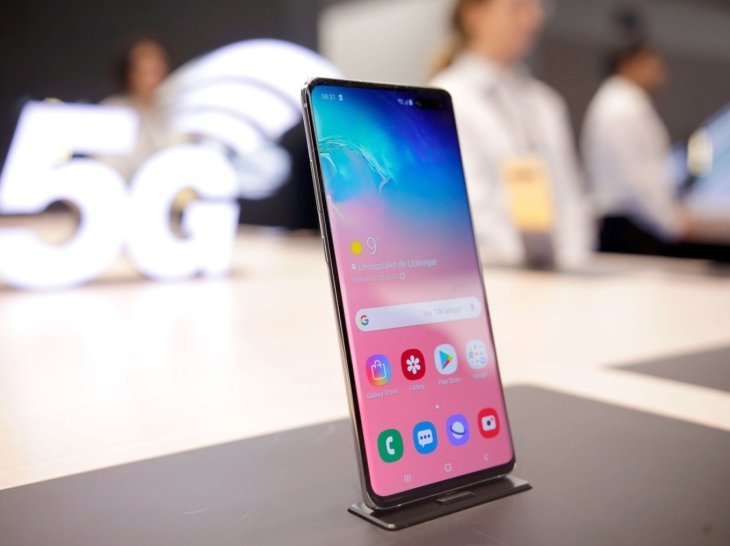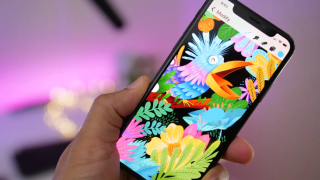Upgrade Yourself To 5G In 2020, It's Worth It And Here's Why
Dhir Acharya - Jul 18, 2019

You may not think about buying a 5G phone right now, but you will soon change your mind because the devices and network will get much better in 2020.
- Jio Is Making Rs 2,500-3,000 5G Smartphones For The Indian Market
- Long Before Border Conflict, Reliance Jio Has Worked To Prevent Huawei From Infiltrating India's 5G Network
- Xiaomi Might Release A Cheap 5G Smartphone For As Low As Rs. 10,000 At The End Of This Year
You may not think about buying a 5G phone right now, but you will soon change your mind because the devices and network that are currently limited will get supercharged as we’re coming closer to the year 2020.
We’ve heard a lot that the next-generation wireless network will be a game-changing technology, promising dramatic speed and coverage boost. It’s touted to run 10 to 100 times faster than the current 4G and quicker than every physical fiber-optic cable you have in your house. Not just that, latency problems will get much improved.
For now, however, we have just a few of the promises coming true.
In recent months, 5G has begun to feature in the US along with a handful of other countries, but it’s not perfect yet. The biggest flaw we’ve seen is the spotty coverage, high cost, and limited devices.

However, the good news is 5G will quickly expand to more locations while carriers are racing to upgrade their networks. As new modems enter the market late this year, the biggest issues we’re having with the fifth-generation network will be solved, mostly.
By 2022, the fifth-generation network will cover a much wider area in the world and then, you will want to change into a phone compatible with the new network.
New modems are on the way
What we’re talking about is Qualcomm’s X55.
The giant chip maker is now the only one to offer 5G processors in the US, which means 5G phones and networks rely on what Qualcomm offers with its wireless chips.
The current X50 from Qualcomm can run on the next-generation network only, so phone makers have to add a separate chip for older networks, hence higher price, bulkier design, and more battery consumption.
The X55, however, will have the ability to run on both the 5G and older wireless tech generations, so users can switch between different carriers on a single device instead of being tied to one specific network.
Also, phone players can use the X55 to produce unlocked 5G handsets. So, all in all, you should wait until the rollout of the X55 to get a smartphone running on the fifth-generation wireless network.

More new and cheaper phones
As of now, there are just a few 5G phones out there, and they are not cheap at all.
As stated by Qualcomm President, so far, only flagship phones are available with 4G and 5G variants; and when the X55 comes out, most Android flagships in 5G-availed markets will be 5G. He added that some companies may release X55-powered phones in 2019, but most of them will come out starting next year.
The president of Qualcomm is optimistic about 2020 because the company integrates the capabilities of the X55 into a new Snapdragon chip to be launched next year. Then, phones will be cheaper, more power-efficient and carry other benefits. According to Samsung’s statement at MWC 2019, the phone maker has plans to make future Galaxy S handsets with the X55, which may start with the Galaxy S11 to come out in 2020.

In terms of phone prices, the existing Galaxy S10 5G costs $1,299 while the S V50 ThinQ from LG has a price range between $999 and $1,152. On the other hand, Xiaomi launched the Mi Mix 3 5G in May, costing $679, which is cheaper than many available 4G handsets. Other players like Huawei, Motorola, and OnePlus have also launched smartphones that run on the next-generation network.
However, not everyone is as optimistic as Qualcomm.
Verizon VP of networking and technology said that there will be more devices coming out in 2019.
On the other hand, as per the prediction of Sprint CTO, by 2020’s end, the fifth-generation network will have become a regular capability among premium smartphones, including a 5G iPhone as Qualcomm and Apple have settled their dispute earlier this year.
Wider coverage
Every wireless signal travels over invisible airwaves through radio frequency that’s called a spectrum. Early 5G networks use millimeter wave, a high-frequency band that offers super capacity and speeds. On the contrary, 5G in later rollouts will utilize lower-frequency bands called sub-6GHz with a wider range but the speeds will be either similar to or just a bit better than 4G.
The sub-6GHz spectrum’s range is not the same everywhere. Midband spectrum can travel over 1.6 kilometers in open, flat areas; but in cities, it can travel less than 800 meters. But some carriers may use even lower-frequency spectrum but still guarantee longer ranges.

During a CNET tests on 5G of different carriers, using Verizon to download Stranger things Season 3 took only 52 seconds while using Sprint took 8 minutes and 40 seconds. However, Sprint’s network covers a much larger area and it expects to reach 700,000 people in Chicago and Verizon can only cover certain blocks in the crowded parts of the city.
It won’t be until companies combine sub-6GHz networks with millimeter-wave that coverage will significantly increase. It takes a technology combination, not choosing one over another.
One strategy that carriers can adopt is using millimeter wave for crowded places in cities and the other spectrum for sending the signals over a longer distance, as T-Mobile and Sprint are planning to do in the US.
Carriers are racing to build their own networks
Since the fourth and fifth-generation networks share the same backbone, using 5G sometime just means updating radio or software. Hence, the presence of the next-generation wireless network is growing fast city by city.
In the US, there are already four carriers that offer 5G networks, namely Verizon, T-Mobile, AT&T, and Sprint. And they all have plans to expand their 5G services to more cities in the future. For example, Verizon is offering 5G in four markets with an intention to expand to another 26 markets by 2019’s end.
Tricks to further boost 5G speeds
Apart from building networks, carriers can also use some technological innovation to enhance speed and coverage.
The first is dual connectivity, which is already available, allowing phones to run on both the fourth and fifth-generation networks. This means users always have a cellular connection even outside the 5G range and can enjoy faster speeds.

Another one is called spectrum refarming, which allows carriers to shift from older networks’ radio airwaves to the fifth-generation network. Previously, carriers had to wait for users to leave a particular band to be able to move them to newer technology.
The third one is dynamic spectrum sharing, possibly available in 2020, means carriers can use one spectrum for both 5G and 4G. Imagine when you have different roads for cars and buses, DSS means one big highway with separate lanes for cars and lane for buses. With a software update, 4G LTE networks can be turned into 5G so that towns and cities can enjoy faster wireless services.
Also, carrier aggregation allows combining many wireless signals into one. Therefore, carriers can get even higher speeds compared with using its own single band.
It may not make sense to rush to get a 5G smartphone right now, but it will sure be worth it to upgrade to the next-generation network in 2020.
Featured Stories

Features - Jan 23, 2024
5 Apps Every Creative Artist Should Know About

Features - Jan 22, 2024
Bet365 India Review - Choosing the Right Platform for Online Betting

Features - Aug 15, 2023
Online Casinos as a Business Opportunity in India

Features - Aug 03, 2023
The Impact of Social Media on Online Sports Betting

Features - Jul 10, 2023
5 Most Richest Esports Players of All Time

Features - Jun 07, 2023
Is it safe to use a debit card for online gambling?

Features - May 20, 2023
Everything You Need to Know About the Wisconsin Car Bill of Sale

Features - Apr 27, 2023
How to Take Advantage of Guarantee Cashback in Online Bets

Features - Mar 08, 2023
White Label Solutions for Forex

Review - Jul 15, 2022
Comments
Sort by Newest | Popular